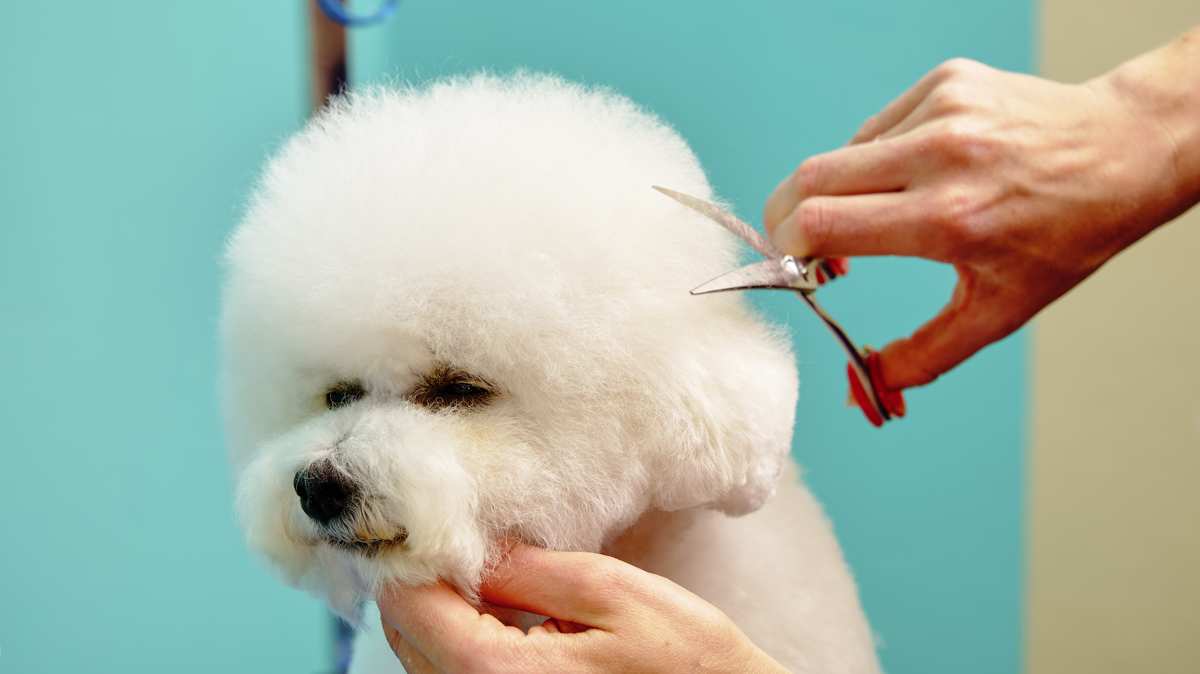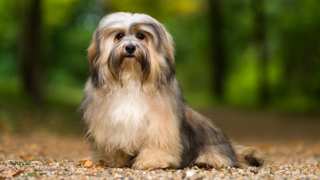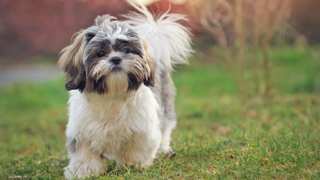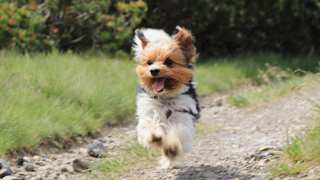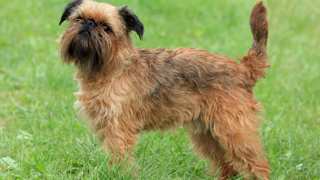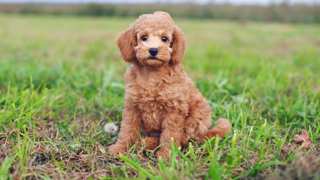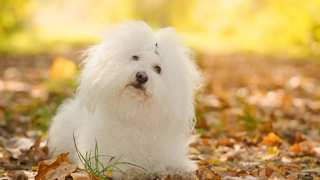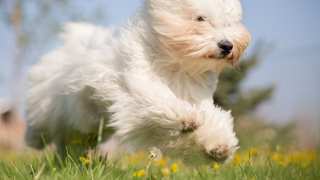Bathing a Bichon Frise isn't a difficult task--but Bichon Frise bathing can be time-consuming. How often should you bathe a Bichon Frise? Most owners give their Bichons a bath every 3-4 weeks (with supplemental "emergency baths" if the dog's white coat gets especially dirty).
A few tips on cleaning your dirty Bichon Frise: first, these dogs have pretty sensitive skin, so it's very important to use canine shampoo. Dog bath products have the proper pH balance, so they won't irritate your Bichon's skin the way human shampoos will--plus they'll make your Bichon Frise smell great! It's also good to use canine conditioner during these dogs' baths, to help keep the coat fluffy and soft and to minimize the appearance of mats and tangles.
The best shampoo for Bichon Frise puppy and adult dogs is from brands like Earthbath, TropiClean, and Vet's Best, among others.
How to bathe a Bichon Frise dog: first give the dog a thorough brushing, making sure the coat has no mats or tangles (which, if they get soaking wet, will become nearly impossible to remove). These little dogs are small enough to bathe in the kitchen sink. Wet the coat completely with warm water, then apply a small amount of Bichon Frise shampoo to the dog's back. Lather well, working downward and outward as you go. (And don't forget the legs, belly, and tail!) Use a washcloth to clean the dog's face and ears, then rinse the entire coat very thoroughly, as any shampoo residue will cause skin irritation. Repeat the entire process with conditioner.
Drying your Bichon has a few steps too: first towel-dry the coat, then continue drying with a hair dryer; make sure the dryer is on a low setting, as too much heat can burn the Bichon's skin. As you dry, use the the slicker brush to comb and shape the coat to your liking. After you're done with the hair dryer, give the dog a final brush-through to make to coat look clean and neat.
